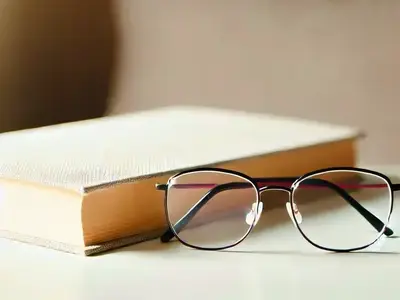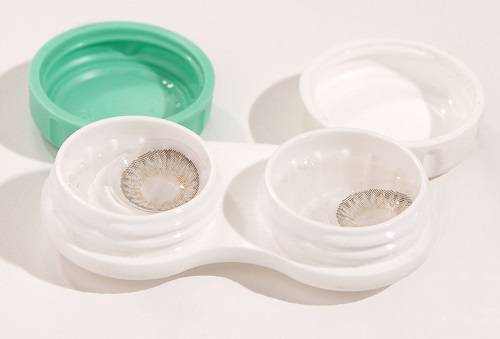If you find yourself squinting at your phone, holding books at arm’s length, or constantly adjusting the light just to read a menu, you’re not alone. This common issue, called presbyopia, affects the majority of adults over 40. The simple solution? Reading glasses. However, choosing the right pair isn’t as straightforward as it may seem. Let’s take a deep dive into the nuances of reading glasses, their features, and what you should look for in 2024 to get the best bang for your buck.

Presbyopia: Why Reading Glasses are a Necessity for Most Over 40
Presbyopia is a natural part of aging. By the age of 45, nearly 85% of adults experience difficulty focusing on nearby objects. This is due to the gradual hardening of the lens in your eye, which reduces its flexibility. It’s not something you can exercise away or prevent, and this makes reading glasses essential for many.
Reading glasses are an effective tool, but with the variety of options available today, selecting the right pair can feel overwhelming. Should you go with drugstore reading glasses, or invest in custom-made prescription lenses? Are blue-light filtering glasses really worth it? Let’s explore some insights from ophthalmologists, optometrists, and consumer reports to help make sense of the market.
The Pros and Cons: Over-the-Counter vs. Prescription Reading Glasses
There are two main categories of reading glasses: over-the-counter (OTC) and prescription. Each comes with its own set of advantages and disadvantages.
| Feature | OTC Glasses | Prescription Glasses |
|---|---|---|
| Cost | $10 – $50 | $100 – $500 |
| Customization | Minimal | Fully customizable to each eye |
| Availability | Widely available in pharmacies and retail stores | Requires an eye exam |
| Lens Quality | Lower quality, can cause distortion | High-quality lenses, precise correction |
- OTC Reading Glasses are ideal for occasional use, especially if both eyes have similar vision requirements. They are affordable, and you can buy them almost anywhere. However, studies show that around 30% of users experience headaches or eye strain because the lenses aren’t tailored specifically for their needs.
- Prescription Reading Glasses, on the other hand, are tailored to your exact prescription. They can correct other visual issues like astigmatism and are less likely to cause discomfort. However, they do come at a significantly higher cost and require a visit to an eye care professional.
Dr. Melissa Greer, an optometrist from Chicago, emphasizes that prescription reading glasses are especially beneficial for people who need different strengths for each eye or have additional refractive issues. “For many patients, the investment in prescription reading glasses means less eye fatigue and better long-term eye health,” she explains.
Blue Light Filtering: Necessity or Marketing Hype?
One of the most prominent trends in reading glasses today is the addition of blue light filtering. With digital devices becoming an integral part of our lives, many reading glasses now come with blue light filters. But is it necessary, or just another upsell?
Blue light blocking glasses are designed to reduce eye strain from prolonged screen time, particularly useful if you spend hours reading from a tablet or computer. According to a 2023 study by the American Academy of Ophthalmology, while blue light is unlikely to cause permanent damage to the eyes, it can contribute to digital eye strain, which affects over 70% of adults who use screens for more than six hours daily.
However, blue light filtering can add an extra $20 to $100 to the price of reading glasses. For many, the reduction in eye strain is worth the cost, especially those who work from home or use devices late at night. Dr. Andrew Lin, an ophthalmologist, points out that blue light blocking isn’t a must for everyone. “If you’re only using reading glasses for 15 minutes a day to read a book, you probably don’t need blue light filters. But if you’re reading from your phone or tablet before bed, it can be a worthwhile addition.”
Readers, Progressives, or Bifocals: Which Should You Choose?
When it comes to addressing presbyopia, reading glasses aren’t the only option. Progressive lenses and bifocals also serve to correct near vision, but in different ways.
- Reading Glasses: These are single-vision lenses designed solely for close-up work. Perfect for reading, knitting, or other activities requiring focus within a short distance.
- Progressive Lenses: These offer a seamless gradient of increasing lens power, allowing for clear vision at all distances—near, intermediate, and far. They are an excellent choice for those who don’t want to switch between reading glasses and regular glasses throughout the day.
- Bifocals: These have a distinct line separating the near and distance prescriptions. Though effective, they are seen as less attractive or “old-fashioned” by many users today.
Table: Comparison of Vision Aid Types
| Type | Pros | Cons |
|---|---|---|
| Reading Glasses | Affordable, easy to use | Only for near vision |
| Progressive Lenses | Multi-functional, seamless transitions | Expensive, adaptation period required |
| Bifocals | Clear separation of near and far | Visible line, limited mid-range focus |
Consumer Insight: According to a 2022 survey by Consumer Reports, 60% of respondents preferred progressives over bifocals or single-vision readers, despite the higher cost, due to their convenience and cosmetic appeal.
Current Trends: Stylish Frames and Sustainability
The market for reading glasses has evolved beyond functionality. In 2024, sustainable materials and fashion-forward designs are making waves. Companies like Warby Parker and Peepers are introducing frames made from recycled ocean plastics and plant-based acetate. Consumers are increasingly looking for options that align with their values, with over 45% of buyers indicating a preference for eco-friendly eyewear, even if it costs a bit more.
Style is also a major consideration. Gone are the days when reading glasses were just functional tools. Today, they are fashion accessories. Cat-eye frames, round John Lennon styles, and vintage aviators are all popular choices, allowing wearers to express their style. A survey by Vision Council found that 68% of people consider style an important factor when buying reading glasses, right behind comfort and price.
Our Editorial Advice: Making the Right Choice for Your Eyes
Choosing the right reading glasses depends largely on your lifestyle and needs. If you find yourself reading for long periods or using multiple devices, consider investing in a pair with blue light filters. If your eyes have different strengths or you experience significant eye strain, prescription readers are worth the investment.
Remember, comfort and eye health are paramount. It’s easy to overlook the need for reading glasses until your eyes are strained and tired, but taking proactive measures can improve not just your vision but also your overall well-being. And if style is part of the equation, there’s no shortage of options that blend function with fashion.
Take care of your eyes, and they’ll take care of you.





